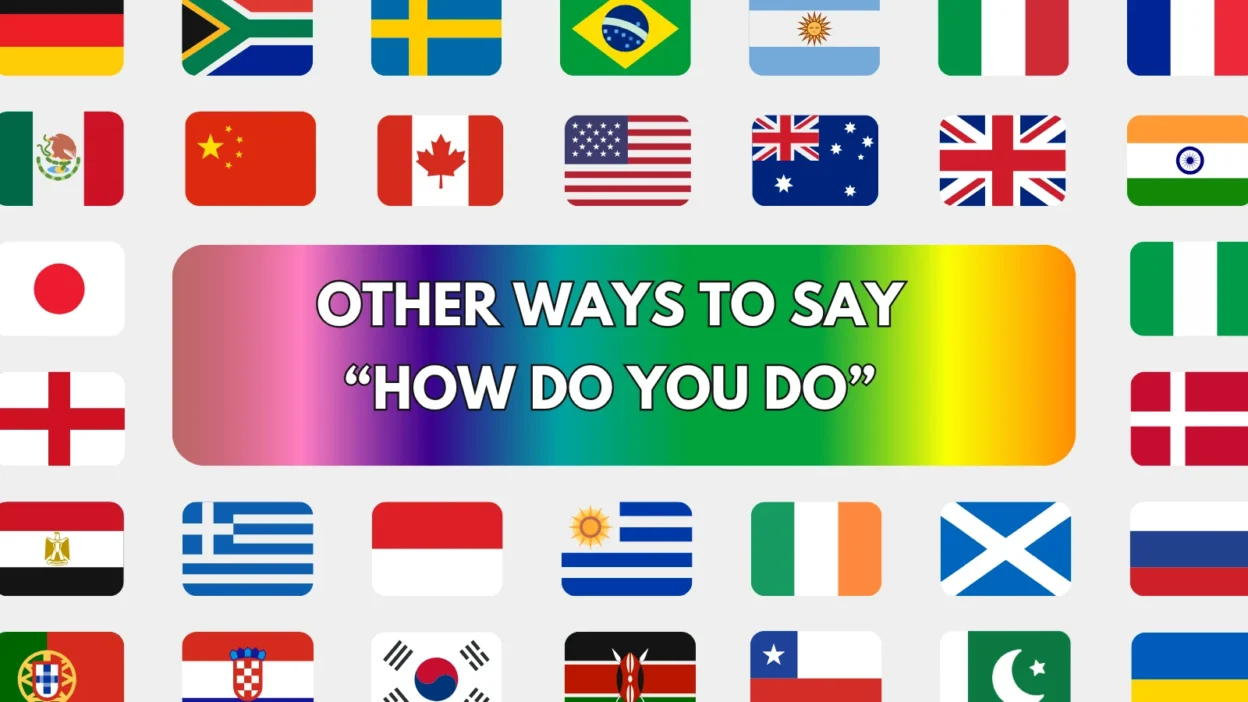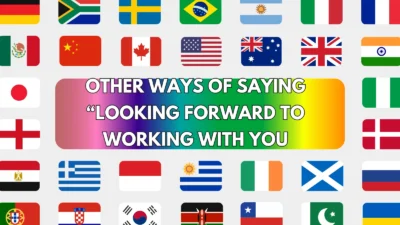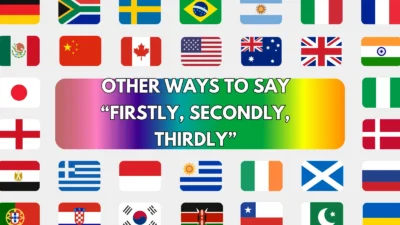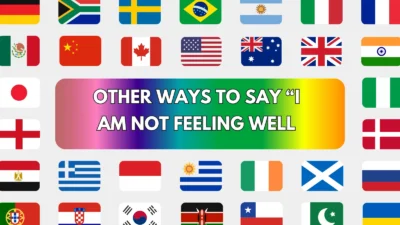The phrase “How do you do” is a classic English greeting, often used in formal or polite introductions. However, in modern conversation, it can sound stiff or old-fashioned. If you want to greet someone naturally — whether in a professional setting, a friendly chat, or a first meeting — there are plenty of better alternatives that sound genuine and fit different situations.
Here are 25 other ways to say “How do you do”, each with its meaning, detailed explanation, scenario example, best use, and tone.
1. Nice to meet you
Meaning: A polite way to greet someone upon first meeting.
Detailed Explanation: Common and warm, it immediately builds rapport.
Scenario Example: Nice to meet you! I’ve heard great things about your work.
Best Use: Introductions, professional or casual.
Tone: Friendly, polite.
2. Pleased to meet you
Meaning: Expresses polite pleasure at meeting someone.
Detailed Explanation: Slightly more formal than “nice to meet you.”
Scenario Example: Pleased to meet you, Mr. Roberts.
Best Use: Business or formal introductions.
Tone: Courteous, professional.
3. Great to meet you
Meaning: A warmer, enthusiastic alternative.
Detailed Explanation: Shows excitement and sincerity.
Scenario Example: Great to meet you! I’ve been looking forward to this chat.
Best Use: Networking, interviews, friendly meetings.
Tone: Warm, engaging.
4. It’s a pleasure to meet you
Meaning: Shows genuine delight in meeting someone.
Detailed Explanation: Ideal for professional or high-respect situations.
Scenario Example: It’s a pleasure to meet you, Dr. Collins.
Best Use: Formal greetings, business introductions.
Tone: Respectful, elegant.
5. Good to see you
Meaning: Used when meeting someone you’ve already met before.
Detailed Explanation: A versatile and positive expression.
Scenario Example: Good to see you again! How have you been?
Best Use: Casual or professional re-meetings.
Tone: Friendly, warm.
6. How’s it going?
Meaning: A casual greeting to ask how someone is doing.
Detailed Explanation: Perfect for informal contexts or peers.
Scenario Example: Hey! How’s it going today?
Best Use: Friends, coworkers, casual chats.
Tone: Informal, cheerful.
7. How are you?
Meaning: The most common and universal greeting.
Detailed Explanation: Works in almost any context.
Scenario Example: Hi Sarah! How are you?
Best Use: All-purpose, formal or informal.
Tone: Neutral, polite.
8. What’s up?
Meaning: A relaxed way to say hello and ask what’s new.
Detailed Explanation: Common among friends or peers.
Scenario Example: Hey man, what’s up?
Best Use: Casual, friendly conversation.
Tone: Informal, upbeat.
9. How have you been?
Meaning: Asks about someone’s well-being since you last met.
Detailed Explanation: Great for reconnecting after some time apart.
Scenario Example: How have you been since the last conference?
Best Use: Reunions, follow-ups.
Tone: Warm, personal.
10. Good to meet you
Meaning: A direct but friendly greeting.
Detailed Explanation: A simpler version of “nice to meet you.”
Scenario Example: Good to meet you! Thanks for making time today.
Best Use: Professional or casual settings.
Tone: Neutral, polite.
11. How are things?
Meaning: A light and conversational check-in.
Detailed Explanation: Sounds natural and open-ended.
Scenario Example: How are things at work these days?
Best Use: Everyday conversation, business small talk.
Tone: Friendly, casual.
12. What’s new?
Meaning: Invites the person to share recent updates.
Detailed Explanation: Keeps conversation current and informal.
Scenario Example: Hi John! What’s new with you?
Best Use: Casual encounters or friendly chats.
Tone: Relaxed, approachable.
13. How’s everything?
Meaning: A warm way to ask about someone’s life in general.
Detailed Explanation: Broader and more caring than “how are you.”
Scenario Example: How’s everything at your end?
Best Use: Follow-ups, casual messages.
Tone: Friendly, natural.
14. How’s life treating you?
Meaning: A caring question about someone’s overall well-being.
Detailed Explanation: Suggests genuine interest.
Scenario Example: How’s life treating you these days?
Best Use: Casual, personal interactions.
Tone: Warm, friendly.
15. How are you doing?
Meaning: A conversational and familiar version of “how are you.”
Detailed Explanation: Feels natural in both speech and writing.
Scenario Example: Hi Maria, how are you doing today?
Best Use: Everyday greetings.
Tone: Polite, friendly.
16. It’s great to see you
Meaning: Expresses joy upon meeting someone again.
Detailed Explanation: Perfect when reuniting with acquaintances or colleagues.
Scenario Example: It’s great to see you after so long!
Best Use: Friendly or semi-formal meetings.
Tone: Warm, positive.
17. Long time no see
Meaning: Highlights a long gap since last meeting.
Detailed Explanation: Casual and nostalgic.
Scenario Example: Long time no see! How have you been?
Best Use: Informal reunions.
Tone: Friendly, playful.
18. What have you been up to?
Meaning: Invites the person to share recent activities.
Detailed Explanation: Encourages a deeper, engaging conversation.
Scenario Example: What have you been up to lately?
Best Use: Reconnecting with friends or coworkers.
Tone: Curious, warm.
19. How’s your day going?
Meaning: Asks about the current state of their day.
Detailed Explanation: Simple and pleasant small talk opener.
Scenario Example: Hey, how’s your day going so far?
Best Use: Chats, customer service, meetings.
Tone: Kind, conversational.
20. What’s going on?
Meaning: Friendly and casual way to start a chat.
Detailed Explanation: Similar to “what’s up,” but slightly broader.
Scenario Example: What’s going on, Mike? Haven’t seen you around.
Best Use: Informal settings.
Tone: Relaxed, engaging.
21. How’s everything going?
Meaning: A caring, extended version of “how’s it going.”
Detailed Explanation: Adds warmth to casual or semi-formal conversation.
Scenario Example: How’s everything going with the new job?
Best Use: Work or social settings.
Tone: Friendly, polite.
22. How are you feeling today?
Meaning: Asks about emotional or physical state.
Detailed Explanation: Shows empathy and thoughtfulness.
Scenario Example: How are you feeling today? You seemed tired yesterday.
Best Use: Personal, caring interactions.
Tone: Compassionate, sincere.
23. How’s your week been?
Meaning: A short, easy way to connect.
Detailed Explanation: Great for Monday chats or check-ins.
Scenario Example: How’s your week been so far?
Best Use: Work settings, casual talk.
Tone: Light, friendly.
24. How’s your morning going?
Meaning: A situational greeting early in the day.
Detailed Explanation: Adds a nice personal touch to simple greetings.
Scenario Example: Good morning! How’s your morning going?
Best Use: Morning greetings, messages.
Tone: Warm, casual.
25. How’s your day been so far?
Meaning: Shows interest in their current experience.
Detailed Explanation: Encourages engagement beyond small talk.
Scenario Example: How’s your day been so far? Everything okay?
Best Use: Texts, casual meetings, customer chats.
Tone: Caring, open.
Conclusion
“How do you do” might sound polished, but it’s outdated for most modern conversations. Depending on the situation, you can replace it with friendly greetings like “Nice to meet you,” “How’s it going?” or “Great to see you.”
For formal moments, “Pleased to meet you” or “It’s a pleasure to meet you” are perfect. Whether it’s a business meeting, casual catch-up, or friendly chat, these alternatives will help you sound natural, approachable, and genuinely interested in others.



